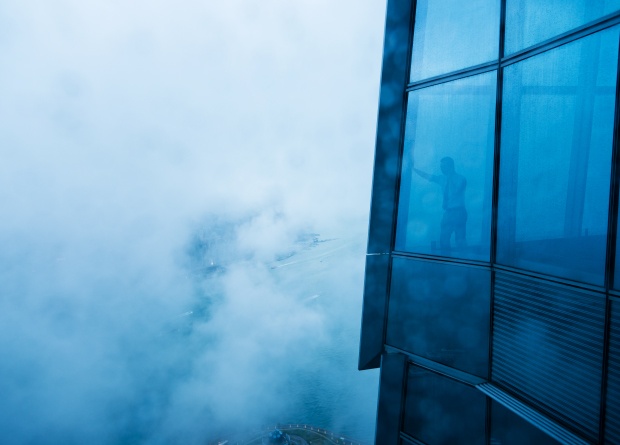Blog
A Treasurer Reflects on Surviving a Crisis

Huddle up treasurers, you are once again the CFO’s most valuable asset. In times of volatility and crisis, your role becomes even more critical and valuable to the organization, but this isn’t the first time we’ve experienced something like this. Through 9/11, the 2003 Northeast blackout and the 2008 financial crisis you were able to react and learn, and now is the time to reflect on those experiences and apply them to today’s risks. What I can be thankful for, is that in all instances I had the right systems in place during those trying times, as well as fully tested and operational business continuity measures, meaning decisions were executed with as much confidence as possible in each scenario.
9/11: Prayers, Fear and Unforeseen Economic Shock
On Sept. 11, 2001, my thoughts first turned to the ones we lost, but along with that day came the fear of what was to come. As an instantaneous economic shock ensued, financial decisions had to be made in a matter of minutes, not hours and certainly not days. As we gathered in horror, watching the events unfold on the television, we still had a job to do. By 9:30 a.m., less than 30 minutes after the second plane crashed into the South Tower of the World Trade Center, our treasury team collected themselves and scrambled to redeem all outstanding invested cash into our concentration accounts, as well as draw on our credit line up to the allowable limits. With the potential for a run on the banks cascading into a full-on financial crisis, we wanted as much cash on hand as possible to sustain operations in the short term.
During this time of fast-paced decision making, operating with the right treasury system was key. The system, in one click, was able to provide a liquidity report with a portfolio synopsis of cash positions as well as credit availability. Also, while we were busy consolidating all cash in house, the system was automatically updating our intra-day cash position, reconciling and posting cash. With the availability of data integrity and timely reporting in the days to come, having the right solution enabled us to execute financial decisions both in the short term, as well as long term, with confidence.
The 2003 Northeast Blackout: A Mid-day Business Continuity Test
At 4:10 p.m. EST on Thursday, Aug. 14, 2003, a widespread power outage began in the Northeastern part of the United States and Canada. Thankfully, by this time in the day, cash positioning was complete, and we were finalizing end-of-day reporting for the CFO. For some locations, the outage would go on to last 14 days, although fortunately, most were up and running by the following Monday, including our offices. However, when the outage started we had no idea how long it was going to last.
4:15 p.m. EST – Only five minutes into the blackout and news reports indicated that it was widespread across multiple states, including portions of Canada. It was time to put our business continuity plan into action. As documented, we began planning for the next business day and beyond. Items we had to consider included having no power in the office, which also meant phones were down – a bigger problem back in 2003 as cell phone technology would not necessarily support high call volumes (an issue also encountered on Sept. 11, 2001).
Once again, having the right treasury system saved the day. At the time, we were one of the first to adopt a web-based treasury management system, which was accessible using only an internet browser. Despite not having power at the office nor at home – and with phone lines not working – we were able to find a remote location that had both power and internet. While not an easy task, by only requiring a browser and no additional software to connect, we were able to position cash for the day and get payments out the door. While we may take for granted a cloud-based treasury system and access to WiFi today, these examples from the past prove that having the right treasury system is essential to your business continuity plan.
The 2008 Financial Crisis
On Monday, Sept. 15, 2008, the Lehman Brothers collapse froze credit markets, which had an immediate effect on companies, suddenly making it impossible to draw on already established credit lines. Unfortunately, these events were unforeseen as news started to break late only the day before the pending market collapse. While economic advisors were briefing President Bush about the circumstances and the critical dangers that could have easily crippled our economy, treasury professionals were laser-focused on three questions:
- Who holds our cash?
- What counterparty risk is tied to where the cash is held?
- What does my cash forecast tell me about my company’s liquidity?
Once again, having the right treasury solution in place enabled us to proceed with confidence and avoid risk. With access to real-time cash positions and forecast trends on demand, we could report our company’s liquidity profile within minutes to the CFO. We relied upon our treasury system to provide a timely and accurate evaluation of where cash was held, to manage forecast models projecting the company’s liquidity profile in the short and long term, and to prepare a fund prospectus to evaluate underlying holdings for counterparty risk. Throughout the evaluation, we had our shareholders in mind, knowing that we did not want our team to be responsible for any risk to the organization’s liquidity. It was imperative that every penny was accounted for and every risk evaluated. All of this was done in a timely and reliable manner, enabling our CFO to report back to the board with confidence that we were in a sound cash position with ample credit-protected liquidity to sustain the company through the storm.
What We’ve Learned in Times of Crisis
We know from prior crises that the treasurer must have the right tools in their toolbox to provide their CFO with timely and reliable information. Relying on the company’s excel wizard is neither scalable nor reliable, which is sadly proven every time the CFO asks for an extra drill-down in a report or a new scenario analysis. The great advantage that treasurers have today is the advancement of treasury technology in recent years. Treasury management systems now feature data visualization for business intelligence (BI), integrated rules-based automation, robotic process automation (RPA), and/or artificial intelligence (AI) to provide more extreme automation than ever before. Data that is systematically analyzed and summarized for CFOs gives them the insight needed to make informed, confident decisions in a timely manner.
While the COVID-19 story and its impact on our global economy are far from being understood, this is no time to wait to take action. Concern of another credit crisis amid this global health scare is understandable, especially for highly leveraged companies that could be mere steps away from illiquidity. What we have learned from the past is that scenarios like this call for extreme decisions to be made in a very short period of time. But, with the right tools and treasury technology, even fast decision-making can be done confidently, and treasury will once again be the CFO’s most valuable asset.












